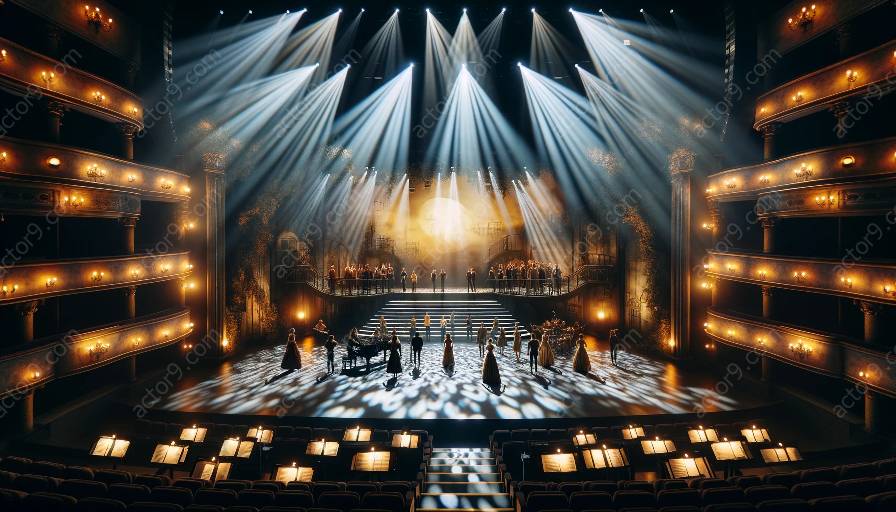Lighting design plays a vital role in enhancing the overall impact of a musical theatre production. By creating effective lighting cues, lighting designers can add depth, emotion, and atmosphere to the performance. In this topic cluster, we delve into the significance of lighting cues in musical theatre and explore various techniques for creating compelling lighting designs.
The Importance of Lighting Design in Musical Theatre
Lighting design is an essential element of stage productions, especially in musical theatre. It contributes to setting the mood, guiding the audience's attention, and highlighting key moments in the performance. In musical theatre, lighting cues are meticulously designed to complement the storyline, evoke emotions, and elevate the overall theatrical experience.
Understanding Lighting Cues
Lighting cues refer to the specific lighting changes that occur throughout a performance. These changes can include adjustments in brightness, color, position, and movement of lights to support the narrative and enhance the visual impact. Effective lighting cues are carefully choreographed to synchronize with the music, dialogue, and choreography, creating a seamless integration of technical and artistic elements.
Key Elements of Creating Effective Lighting Cues
1. Collaboration: Effective lighting cues are the result of close collaboration between the lighting designer, director, and other creative team members. By understanding the artistic vision and dramatic beats of the production, the lighting designer can craft cues that align with the storytelling and emotional dynamics of the musical.
2. Mood and Atmosphere: Lighting cues are used to establish the mood and atmosphere of each scene, from joyful musical numbers to poignant dramatic moments. By manipulating the intensity, color, and quality of light, designers can evoke different emotions and enhance the audience's engagement with the storyline.
3. Timing and Precision: Precision is key in executing lighting cues effectively. Each cue must be meticulously timed to correspond with the actors' movements, music cues, and stage actions. Additionally, transitions between cues should be seamless and imperceptible, ensuring a fluid and immersive theatrical experience.
Techniques for Crafting Compelling Lighting Designs
1. Layering and Texturing: By combining multiple light sources and utilizing various lighting angles, designers can create depth and dimension on stage. Layering lights and incorporating textured gobos can add visual interest and depth to the scenic elements, enhancing the overall visual composition of the musical.
2. Dynamic Shifts: The ability to dynamically shift the lighting dynamics can punctuate pivotal moments in the performance. Whether through rapid changes in color and intensity or subtle shifts in focus, dynamic lighting cues can accentuate dramatic tension, character revelations, and thematic shifts within the narrative.
3. Integrated Visual Storytelling: Lighting cues can serve as a visual narrative that complements the storyline. Designers can utilize light to symbolize shifts in time, location, or emotional states, contributing to the audience's understanding of the plot and character development.
Conclusion
Ultimately, the art of creating effective lighting cues in musical theatre is a dynamic interplay of technical expertise and artistic expression. By understanding the significance of lighting design and mastering the techniques for crafting compelling lighting designs, lighting designers can enrich the visual storytelling of musical theatre productions, leaving a lasting impact on performers and audience members alike.




































